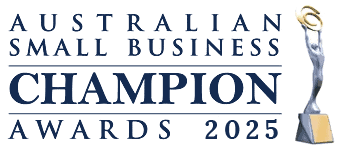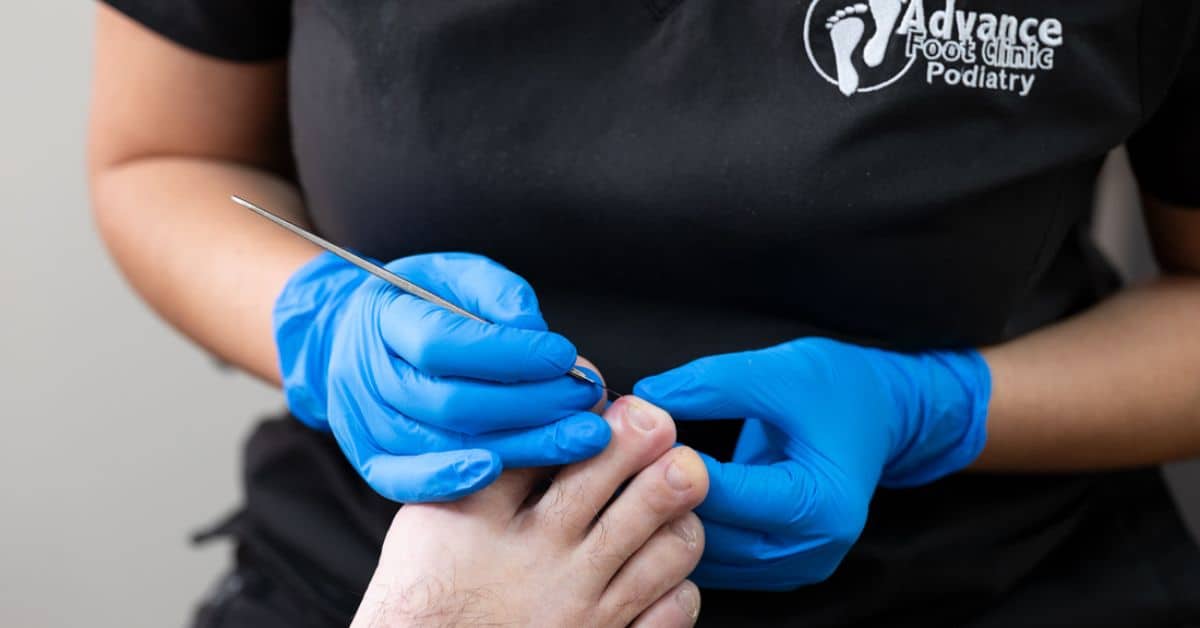When it comes to foot problems, ingrown toenails can be one of the most painful and debilitating. Not only are they extremely painful; they can also lead to dangerous infections and make it hard to go to work or participate in life. Our podiatrists have collectively treated thousands of ingrown toenails over the years. Using this clinical knowledge, we have put together a comprehensive guide on how to treat ingrown toenails.
We’ll cover what an ingrown toenail looks like, how to prevent them, how to treat them at home, when to see a podiatrist, and discuss the option of ingrown toenail surgery for a permanent solution.

What Does an Ingrown Toenail Look Like?
Ingrown toenails occur when the edges or corners of your toenails grow into the skin next to the nail, causing discomfort, pain, and sometimes infection.
You might be wondering, “What does an ingrown toenail look like?” Well, look out for these telltale signs:
- Redness and Swelling: The affected area around the toenail becomes red, swollen, and tender to the touch.
- Pain and Discomfort: You’ll experience pain and discomfort, especially when pressure is applied to the toe or when wearing tight shoes.
- Spiked Nail Edge: The nail might pierce the skin, or you may notice the nail growing in a curved manner, digging into the skin.
- Pus or Drainage: In some cases, there can be pus or fluid drainage, indicating an infection.
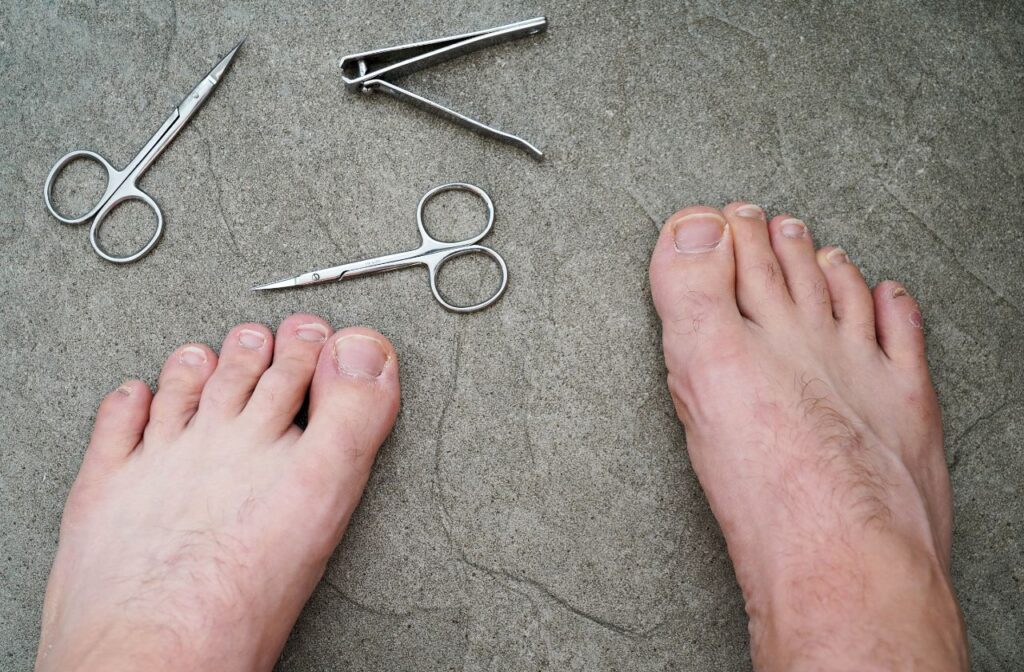
6 Steps to Prevent Ingrown nails
Prevention is always better than treatment when it comes to ingrown toenails. Learning how to cut toenails properly is an essential step in keeping your feet healthy and free from this painful condition. Follow these 6 tips to reduce the risk of ingrown toenails:
1. Choose the Right Tools:
Use proper nail clippers or scissors designed for toenails. Make sure they are clean and wiped with a disinfectant (such as an alcohol wipe) before use.
2. Trim Straight Across:
When cutting your toenails, trim them straight across without cutting down into the corners to ‘round’ the edges. This can encourage ingrown toenails.
3. Don't Cut Too Short:
Keep your toenails at a reasonable length, leaving a bit of white nail at the tip. Cutting them too short can encourage ingrown toenails.
4. Proper Technique:
Cut your toenails straight across while taking your time. Avoid rushed or uneven cuts. If you can’t see or feel your feet well, do not cut them yourself! Podiatrists can cut them for you (this is called a clinical podiatry appointment).
5. Maintain Good Foot Hygiene:
Keep your feet clean and dry to prevent infection. Always wear clean, moisture-wicking socks.
6. Check Footwear Length and Width
Footwear which is too short or narrow will greatly increase the risk of ingrown toenails by encouraging the skin to press into the path of the nail. Ideally you should have about a thumb width at the end of your shoe and the shoe should not press into the side of your toe.
How to Treat Ingrown Toenails at Home
If you’ve already developed an ingrown toenail, there are some at-home treatments you can try to alleviate the discomfort and help the nail grow properly.
1. Warm Salt Water Soaks
Soaking your affected toe in warm, salty water (approx 2 tablespoons in a 5L tub) for 15-20 minutes, a few times a day, can help soften the skin, reduce swelling and treat infection. It’s a simple yet effective way to provide relief for very mild ingrown toenails.
2. Lift the Nail Edge
After soaking, you can gently lift the edge of the ingrown toenail with a clean, sanitised instrument (like a nail file). This can help the nail grow above the skin rather than into it.
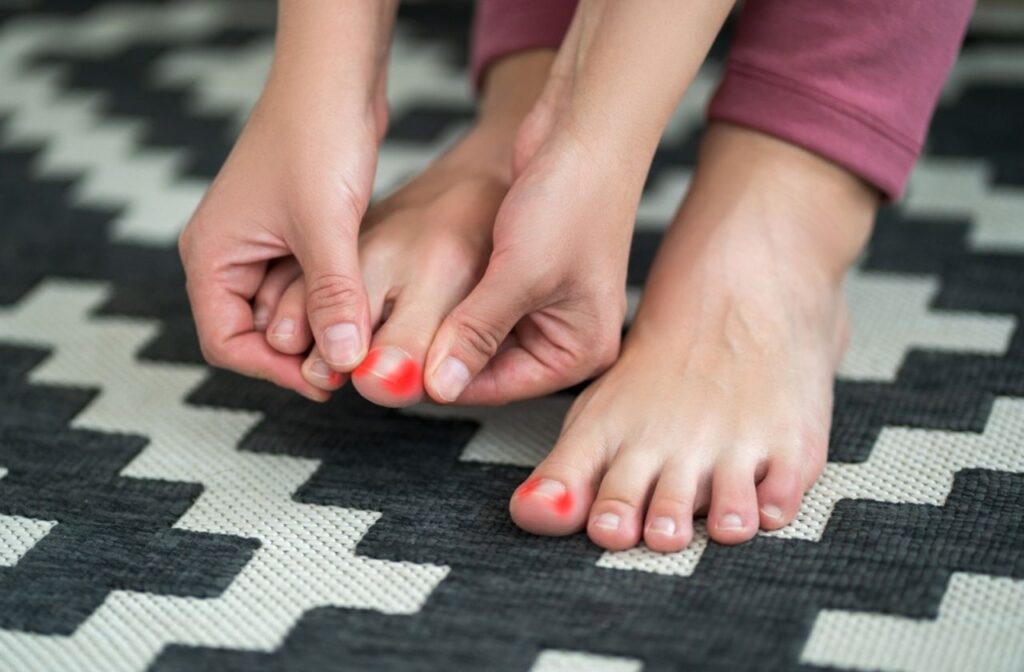
3. Antibiotic Ointment
Applying an antibiotic ointment (such as Betadine liquid) can help prevent or treat any infection that may occur due to the ingrown toenail. Make sure to follow the product’s instructions.
4. Pack under the nail and tape the skin
Using the sterile instrument, gently pack under the nail edge with a small piece of cotton wool. This will help hold the nail clear of the skin. It can also help to use a small piece of strapping/sports tape to pull back the skin away from the nail.
5. Use a Bandage
After lifting the nail edge and applying ointment, cover the area with a bandage. This will protect the toe from further irritation.
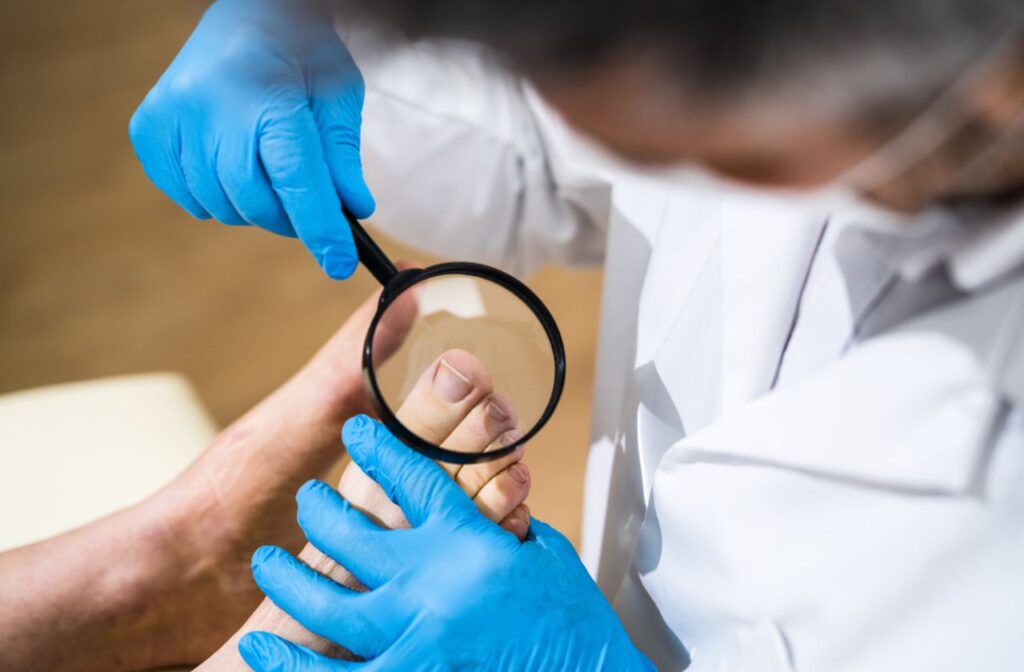
How to treat ingrown toenails - When to Seek Professional Help
While these home remedies can provide temporary relief, there are cases where you should definitely seek professional help from our Brisbane-based Advance Foot Clinic podiatrists.
If your ingrown toenail:
- Persists and does not improve with at-home care.
- Is very painful or you see a ‘spike’ of nail present.
- Is further down the nail (i.e. towards the base of the nail) rather than at the end corner.
- Shows signs of infection, like increased redness, pus, or worsening pain.
- Becomes a recurring problem.
- Or you are at higher risk of infection e.g. Diabetic, elderly, immunocompromised
How to treat ingrown nails - Brisbane Podiatrists
Our podiatrists across all five podiatry clinics in Brisbane have a wealth of experience assessing and treating ingrown toenails. With this experience, our podiatrists will determine the best course of action depending on your particular ingrown toenail.
Treatment might include gently cutting the nail to remove an ingrowing spike of nail and reshaping the nail.
Usually most mild to moderate ingrown nails can be successfully treated in one or two consultations. However, recurring, infected or severe ingrown toenails maybe require antibiotic therapy (from your GP doctor) or a toenail surgery.
Ingrown Toenail Surgery: A Lasting Treatment
In some instances, when ingrown toenails become a recurring problem and conservative treatments are unsuccessful, your podiatrist may recommend ingrown toenail surgery. This procedure, known as a partial nail avulsion, involves removing a portion of the ingrown toenail to prevent it from growing into the skin.
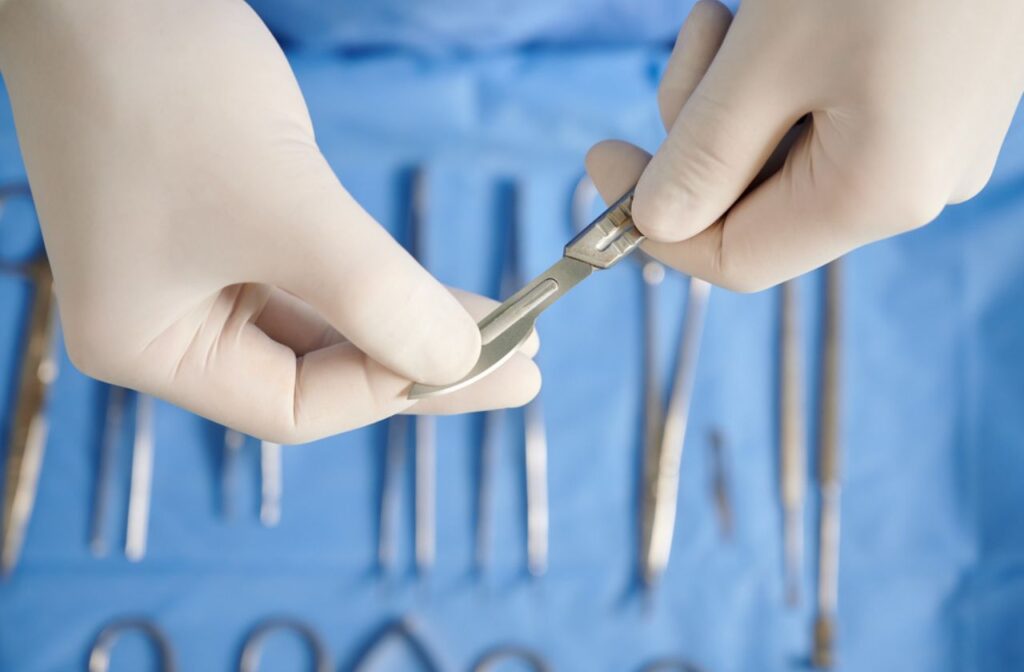
The Ingrown Toenail Surgery Process
1. Local Anesthesia
Your podiatrist will administer local anesthesia to numb the toe, ensuring you don’t feel pain during the procedure.
This can now be done without needles!
2. Nail Removal
The problematic edge of the toenail is carefully removed, and any infected tissue is cleaned.
3. Nail Matrix Destruction
In most cases, a part of the nail matrix (the tissue responsible for nail growth) is safely destroyed (using the chemical agent Phenol) to prevent regrowth of the problematic nail edge.
4. Dressing and Recovery
Your toe will be dressed and bandaged, and you’ll receive aftercare instructions to aid in healing.

Post-Surgery Recovery
After ingrown toenail surgery, it’s crucial to follow your podiatrist’s post-op care instructions. Here are some general guidelines:
- Keep your foot elevated to reduce swelling.
- Light or no activity for at least 12 hours. Ideally rest the foot for 24-36 hours.
- Avoid taking aspirin for pain relief or drinking alcohol (these both encourage more post-op bleeding).
- Avoid tight shoes and keep your toe clean and dry.
- Attend follow-up appointments to monitor your healing progress.
Ingrown toenail surgery is a highly effective and lasting solution for recurrent ingrown toenails, providing relief and preventing future occurrences.
Cosmetically, the nail will be marginally more narrow than before, but it will still look normal and keep growing (just not into the sides).
Book ingrown toenail treatment
Ingrown toenails can be painful and frustrating, but with the right knowledge and care, you can both prevent and treat them. Remember to practise good toenail-cutting habits, use home remedies for minor cases, and don’t hesitate to consult a podiatrist if your ingrown toenail persists or becomes recurrent. If necessary, ingrown toenail surgery is a safe and effective option to finally free you from the discomfort of ingrown toenails.
At Advance Foot Clinic Podiatry, we have five clinics around Brisbane and Mount Isa, and our team of expert podiatrists is always ready to help you. So, take the first step towards healthier feet, and reach out to us for personalised care and advice on managing your ingrown toenails. Your feet will thank you for it!
